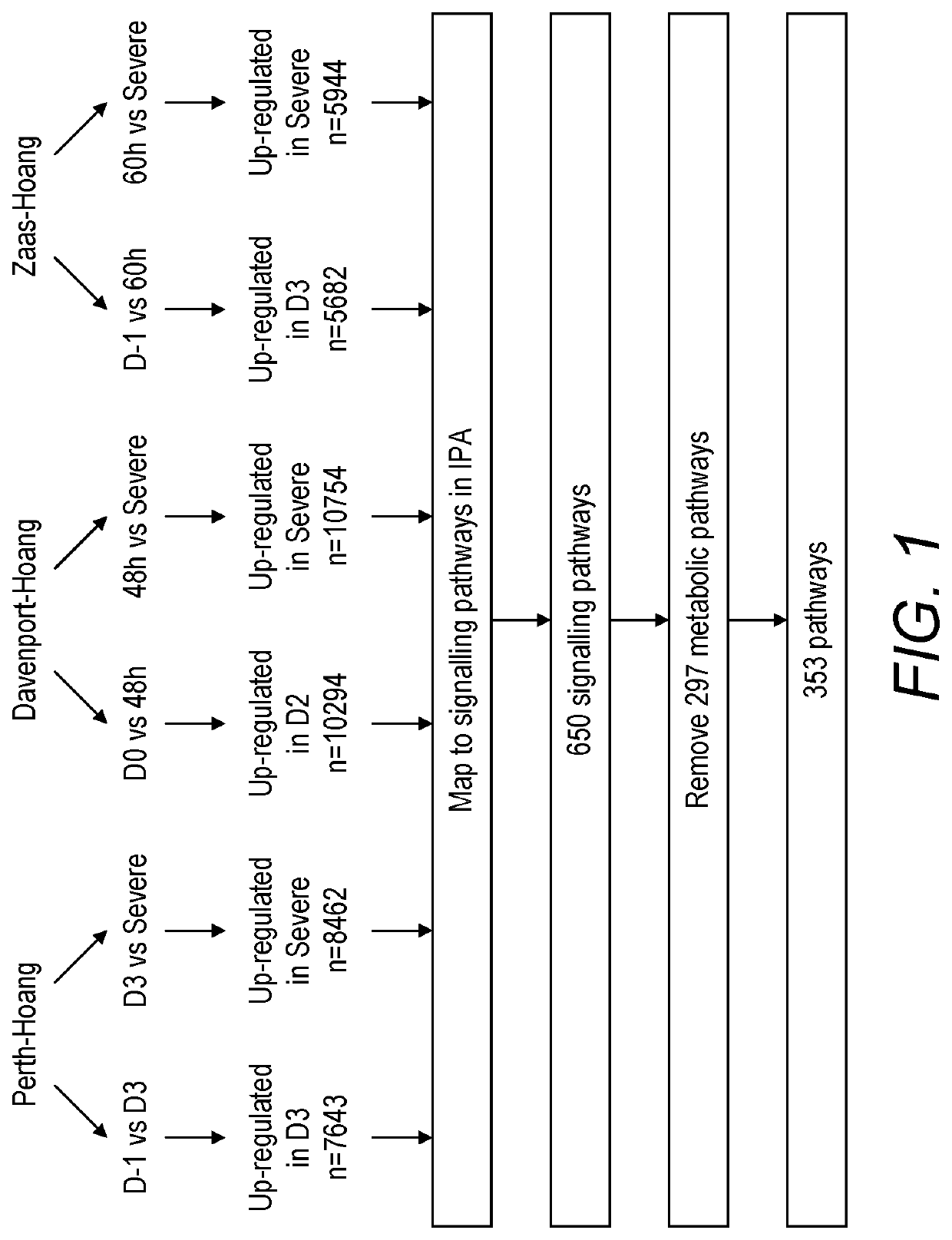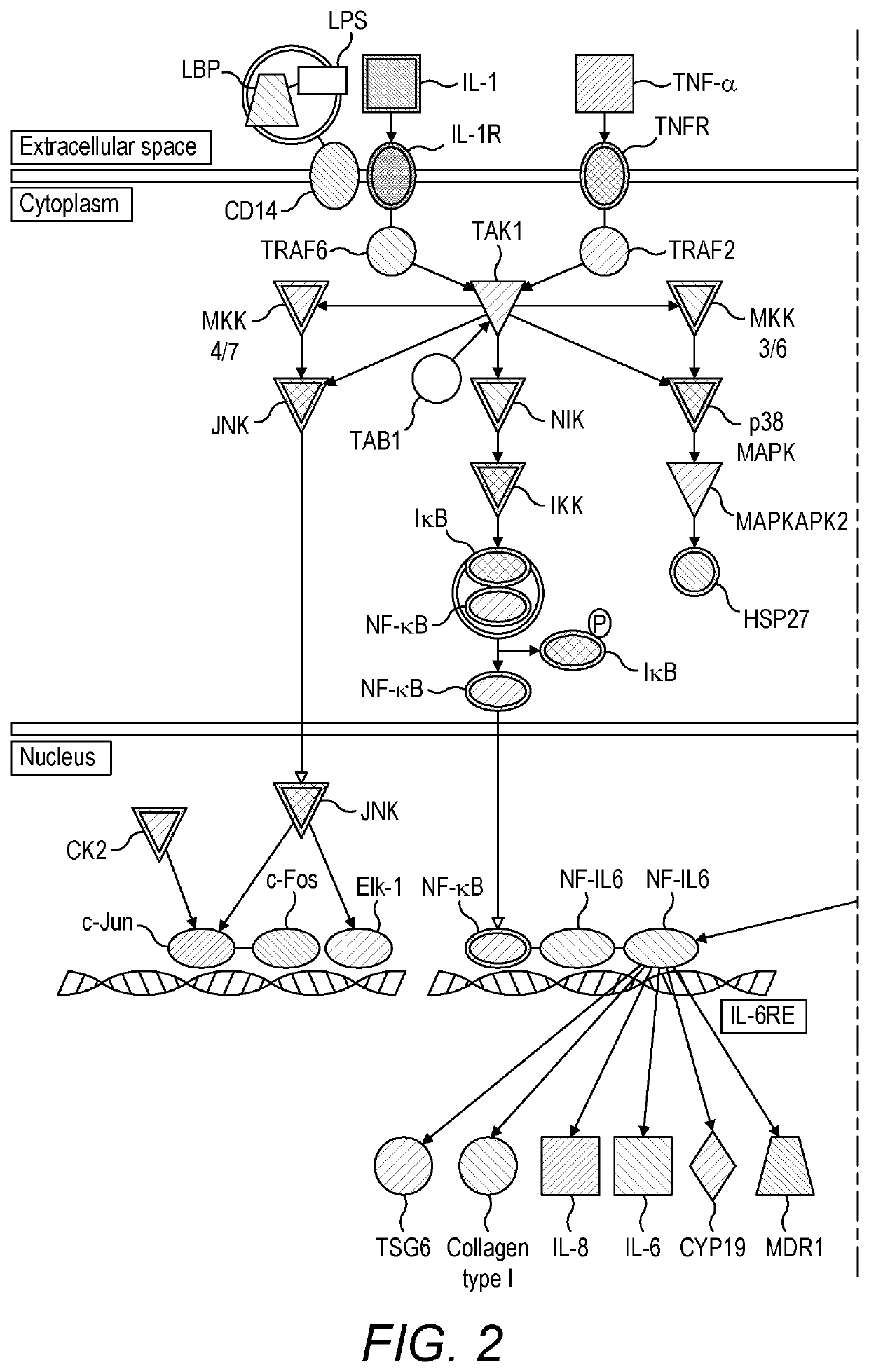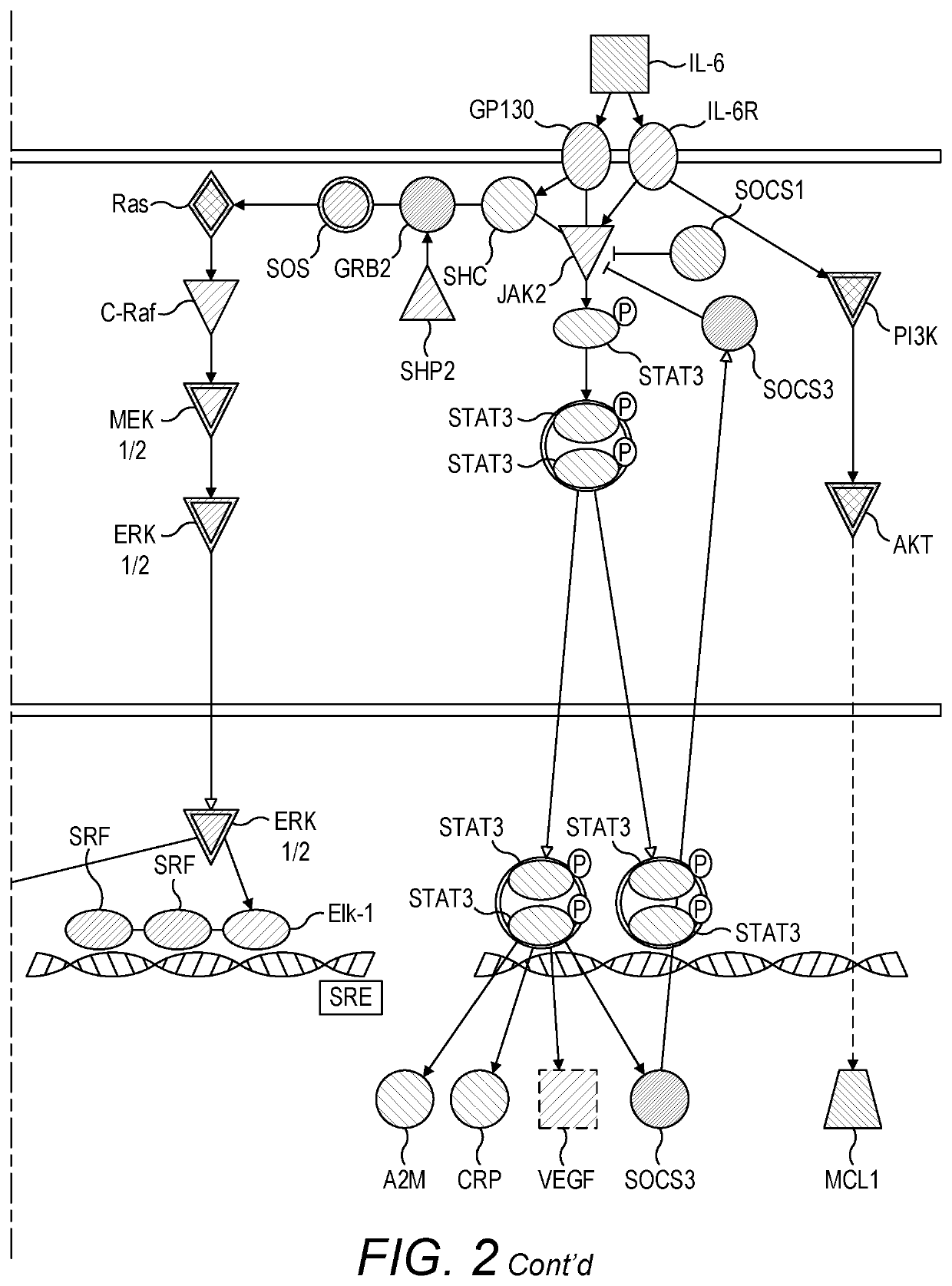Methods and compounds for the treatment or prevention of severe influenza
- Summary
- Abstract
- Description
- Claims
- Application Information
AI Technical Summary
Benefits of technology
Problems solved by technology
Method used
Image
Examples
example 1
ation of p38 MAPK by Transcriptomic Analysis
[0120]Bioinformatics analysis of transcriptomic data from blood samples collected from human volunteers and patients infected with influenza was used to map the signalling pathways activated in the human host response to influenza infection in both uncomplicated (mild and moderate) and severe influenza (see PHE Guidance on Use of Anti-Viral Agents for the Treatment and Prophylaxis of Seasonal Influenza (2015-16), version 6.0, September 2015). Human viral challenge studies were carried out and transcriptomic data from those studies were used for mapping the former, while transcriptomic data from a field-based sampling study (Hoang, L. T. et al., 2014) were used for mapping the latter. Comparison of signalling pathways identified by comparing both datasets enabled the identification of signalling pathways that are very active in severe influenza versus mild and moderate influenza. Further analysis of individual pathway components identified ...
example 2
f p38MAPK Inhibition on Inflammatory Mediator Release in Key Cell Types Relevant to Severe Influenza
[0133]Two p38 MAPK inhibitors were used in in vitro and ex vivo experiments: 1) PH797804, an ATP-competitive highly potent, selective and metabolically stable inhibitor of p38 (Hope HR1, et al., Anti-inflammatory properties of a novel N-phenyl pyridinone inhibitor of p38 mitogen-activated protein kinase: preclinical-to-clinical translation, J Pharmacol. Exp. Ther., 2009 (December); 331(3): 882-95); and 2) Dilmapimod (SB-681323—Betts J Cl, et al., Gene expression changes caused by the p38 MAPK inhibitor dilmapimod in COPD patients: analysis of blood and sputum samples from a randomized, placebo-controlled clinical trial, Pharmacol. Res. Perspect., 2015 (February); 3(1): e00094). The structures of these compounds are as follows:
[0134]Experimental testing of p38MAPK inhibition was carried out in three cell types that are key players in the pathology of severe influenza: epithelial; endot...
example 3
Inhibitory Activity
[0153]The enzyme inhibitory activity of a compound may be determined by fluorescence resonance energy transfer (FRET) using synthetic peptides labelled with both donor and acceptor fluorophores (Z-LYTE, Invitrogen).
[0154]Recombinant, phosphorylated p38 MAPK gamma (MAPK12:Millipore) is diluted in HEPES buffer, mixed with the candidate compound at desired final concentrations and incubated for two hours at room temperature. The FRET peptide (2 μM) and ATP (100 μM) are next added to the enzyme / compound mixture and incubated for one hour. Development reagent (protease) is added for one hour prior to detection in a fluorescence microplate reader. The site-specific protease only cleaves non-phosphorylated peptide and eliminates the FRET signal. Phosphorylation levels of each reaction are calculated using the ratio of coumarin emission (donor) over fluorescein emission (acceptor) with high ratios indicating high phosphorylation and low ratios, low phosphorylation levels....
PUM
| Property | Measurement | Unit |
|---|---|---|
| Time | aaaaa | aaaaa |
| Time | aaaaa | aaaaa |
| Time | aaaaa | aaaaa |
Abstract
Description
Claims
Application Information
 Login to View More
Login to View More - R&D
- Intellectual Property
- Life Sciences
- Materials
- Tech Scout
- Unparalleled Data Quality
- Higher Quality Content
- 60% Fewer Hallucinations
Browse by: Latest US Patents, China's latest patents, Technical Efficacy Thesaurus, Application Domain, Technology Topic, Popular Technical Reports.
© 2025 PatSnap. All rights reserved.Legal|Privacy policy|Modern Slavery Act Transparency Statement|Sitemap|About US| Contact US: help@patsnap.com



